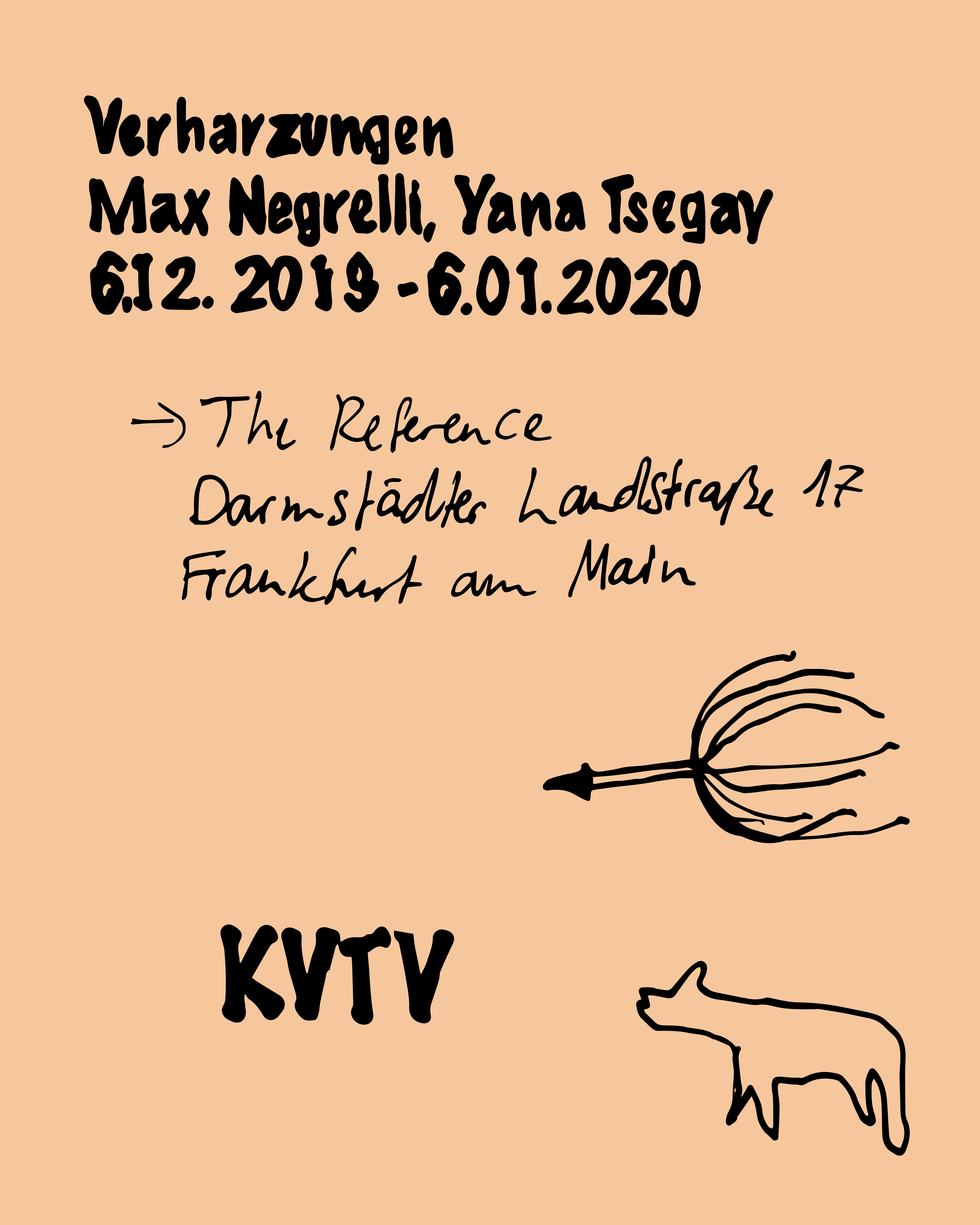Verharzungen
The title of the exhibition Verharzungen (resinifications), a german expression for resinification of resin-like substances, refers to a common principle of the artistic practice of Yana Tsegay and Max Negrelli. What was formerly fluid becomes solid in the process of resinification. Nevertheless, change remains constant and the plural in the title refers to this: “resinifications”. Even if an object appears solid and closed, it continues to experience material changes as well as new meanings through the way we look at it and the value we attach to it.
Max Negrelli and Yana Tsegay are involved in the development of materials that they pick up partly accidentally and sometimes deliberately. Their artistic work is based on research on historical topics, such as "The Amber Room", armors or museum of local history which they stubbornly processes in pictures, objects and installations. Both artists are not interested in uniqueness. They prospect for what is left of the idea of art, as it was once formulated by modernity, in the 21st century and how art can find new ways.
Their art pieces ask more questions than they provide answers. How does the material work? What influence do the artists have? What role does the past play in the development of artist identities today? Where do we start and what do we sink into the realm of oblivion?
Yana Tsegay creates installations that draw on paintings, sculptures or found objects and places them in historical-fictional references to cave painting or the Amber Room. These references create references to the idea of the origin of art and fan out a spectrum of questions about institution, cultural appropriation and female artist identity. Her artistic work is always accompanied by the question of how painting, especially abstract painting, can exist anonymously, without identity and without being fixed or attributed. Her works explore everyday material and artistic boundaries in order to inspire and remind us of new interpretations. Found objects, fur but also isomalt, soap or candy, which are melted into abstract sculptures, create an aesthetic that undermines the distinction between fake and real, historically true or fictional. The successful balance between inner openness and shoulder-shrugging questioning of attributions leads to an art that - like amber - is sometimes clear and transparent, sometimes opaque and impenetrable. Her works throw the viewer back and forth between fabric, form, color and associative moment, and ultimately back to his or her own need for attribution.
Max Negrelli investigates and works with materials in terms of their historical and social dimensions. He picks up objects from the historical stream of forgetting, stages them as contemporary art and thus changes our view of them. His artistic work presents itself as a search that constantly scans its environment for the permanent in change. Ruins of buildings, orchards, armour or fungus spores on old plastics serve him as found objects that spark questions about condition, presence, constancy and identity. The materials he uses in his sculptures show traces of decay and wear. His objects challenge the viewer to deal with the transience of time and his own position in constant change. The artist's freedom is renewed as minimalism of choice. This is reminiscent of an existential freedom - purged of all political questions - as it is handed down from French existentialism.
For Verharzungen conceived Max Negrelli the video A New Design of an Alcohol Backpacker Stove (Berger Hang). The video is an approach to the periphery of Frankfurt that begins with images of longing for home and nature. Negrelli cautiously explores how the appropriation of "nature" by humans leads to the formation of identity and home, but also to a new - specifically human - suspicion of everything foreign and unknown.
Yana Tsegay (1991, Moscow) graduated from the Hochschule für Gestaltung Offenbach am Main with Gunter Reski in 2019. She lives and works in Frankfurt am Main.
Max Negrelli (1992, Leimen) graduated from the Hochschule für Bildende Künste - Städelschule in 2019. studies with Judith Hopf and is studying philosophy and art history at the Goethe University Frankfurt. He lives and works in Frankfurt am Main.
Photos: Ivan Murzin
Curated by KVTV, the exhibition was supported by Kulturamt Frankfurt a.M.














